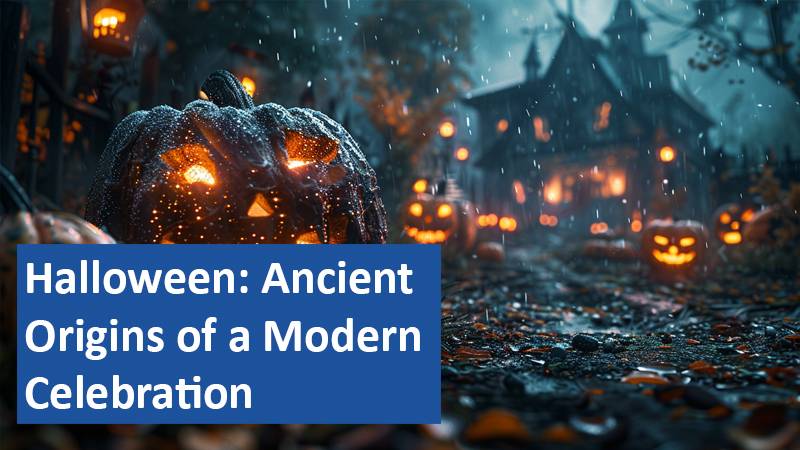Halloween, a night filled with costumes, spooky décor, and the thrill of the unknown, traces back centuries to Celtic traditions. Originating from the festival of Samhain, it marked both the end of the harvest and the beginning of winter. Through centuries of transformation, Halloween has evolved into one of the most celebrated holidays in the United States, while also gaining popularity worldwide.
By Milo Houston
Samhain: The Ancient Roots of Halloween

The origins of Halloween can be traced back to the Celtic festival of Samhain, celebrated on October 31. The Celts believed that, on this night, the barrier between the world of the living and the dead grew thin, allowing spirits to cross over. Samhain was a significant festival, marking the end of the harvest season and the beginning of the cold, dark winter months. Alongside honoring departed souls, the Celts used bonfires to ward off evil spirits and prepared offerings to protect their homes.
Ward Off Spirits and Don Disguises
For protection against spirits they feared, the Celts lit large bonfires and wore costumes made of animal skins. They believed these costumes disguised them from wandering ghosts or, in some cases, allowed them to blend in with the spirits. This practice of dressing up likely evolved into the Halloween costumes we see today. Additionally, villagers would sometimes play pranks on each other under the cover of darkness, blaming any mischief on the visiting spirits.
From “All Hallows’ Eve” to “Halloween”
As Christianity spread, the Catholic Church adapted Samhain traditions by establishing All Hallows’ Day on November 1. The evening prior became known as All Hallows’ Eve, a night that retained many Celtic customs like bonfires and costumes. Over time, All Hallows’ Eve was shortened to “Halloween,” with Celtic customs merging with church practices, preserving some of the original traditions. This period also introduced the custom of giving “soul cakes” to children, marking the early origins of what is now “trick-or-treating.”
Jack-o’-Lanterns and Trick-or-Treating Traditions
The story of “Stingy Jack,” an Irish folktale, introduced the idea of carving lanterns from turnips, which evolved into the modern Jack-o’-lantern. According to legend, Jack’s spirit roamed with a lantern after being rejected from both heaven and hell. Irish immigrants in America found pumpkins more suitable for carving than turnips, making them a staple of Halloween décor. Additionally, the tradition of going door-to-door for treats became widespread in the United States by the early 20th century, combining folklore with a modern love for costumes and sweets.
Halloween remains deeply rooted in ancient rituals, yet it continues to evolve, blending cultures and transforming over time. As one of the largest commercial holidays in the U.S., it brings people together through shared traditions and an appreciation for the mysterious.
Based on information from www.scinexx.de and own research.